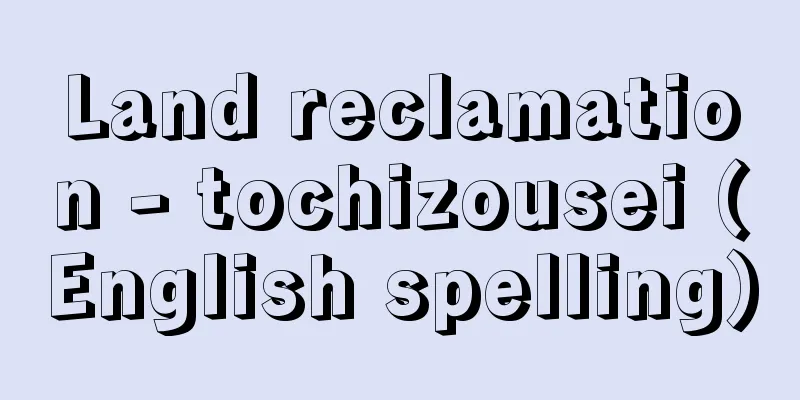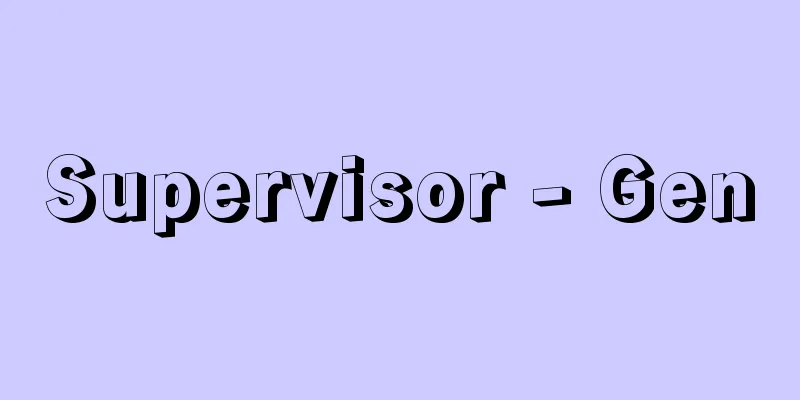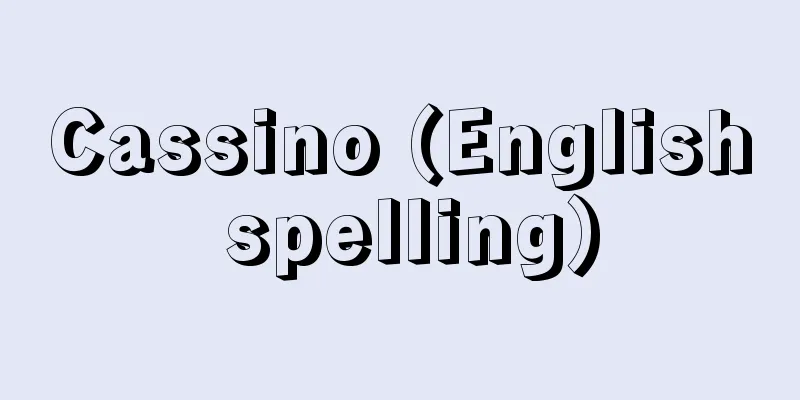Spring Labor Offensive

|
Abbreviation for Spring Wage Increase Struggle. A wage negotiation method in which enterprise unions time their wage struggles to the spring, and each industrial labor union decides in advance the schedule for the amount of demands and settlement, the date for submitting demands and negotiation dates, and the timing of strikes and settlements, and coordinates and unifies actions through joint struggle organizations between industrial unions to raise and standardize wages on a national and industrial scale. By holding wage negotiations at each company at the same time, the aim was to strengthen the negotiating power of enterprise unions, which were considered to be in a weak position vis-à-vis management. [Hiroshi Matsuo and Rei Suzuki] The start and development of the spring offensiveThe first spring offensives were proposed by Ota Kaoru, chairman of the Federation of Synthetic Chemical Industry Workers' Unions (Goka-Ren), in the autumn of 1954 when the Japan Coal Mine Workers' Union (Coal Mine Workers' Union), the Japan Private Railway Workers' Union Confederation (Shitetsu-Souren), the National Federation of Pulp and Paper Industry Workers' Unions (Shipa-Ren), and the Japan Electrical Industry Workers' Union (Densan) organized a five-industry joint struggle conference and planned a unified industry-wide struggle. In January of the following year, 1955, the National Metal Workers' Union (Zenkoku Kinzoku), the Japan Federation of Chemical Industry Workers' Unions (Kagaku Doumei), and the neutral All Japan Electrical Equipment Workers' Union (Denki-Ren, later the All Japan Electrical, Electronics and Information-related Industry Workers' Union Federation, or Denki-Rengo) joined, making the conference an eight-industry joint struggle conference. In the 1955 spring offensive, all industrial organizations that participated in the conference won wage increases in defiance of the government and capitalists' wage-stopping policy. For the 1956 spring wage offensive, a new headquarters for the spring wage increase joint struggle was established, with the addition of unions affiliated with the Council of Public Enterprise and Other Workers' Unions (Koryokyo) and private sector individual unions. In 1959, the General Council of Japanese Trade Unions (Sohyo) and the Liaison Conference of Neutral Trade Unions (Nutsuroren) formed a Spring Wage Offensive Joint Struggle Committee, and the number of participating unions continued to expand and become established. The development of these spring offensives was supported by the growth in exports from 1955 onwards and the rapid economic growth caused by huge capital investment. In particular, during the high economic growth of the 1960s, technological innovation, increased profits for capital due to improved productivity and increased demand for labour meant that spring offensives with the slogan of European-level wage increases attracted widespread sympathy, and the economic conditions were ripe for a response. The All Japan Trade Union Congress (Zenro, later the All Japan General Confederation of Labor, or Domei) and the National Federation of Industrial Trade Unions (Shin-Sanbetsu), which were critical of spring offensives, also began to organize wage struggles during this period, and spring offensives came to take on the appearance of a nationwide unified struggle for wage increases. In the spring labor offensives from the mid-1960s onwards, large private companies (especially heavy chemical industries) acted as pattern setters, creating a wage-determining cycle that spread from private railways to public corporations to national and local government employees. Furthermore, the "spring labor offensive market" that was formed in this way also served as a social function by serving as a guideline for small and medium-sized enterprises and companies in local industries with low unionization rates to determine the amount of wage increases they would like to see. [Rei Suzuki] The turning point of the spring labor offensiveIn 1974, against the backdrop of abnormal price increases, the so-called "National Spring Offensive" addressed issues such as prices, taxation, and social security, and achieved a wage increase of over 30%, the highest since the war. However, the economy began to stagnate and the economic environment became severe. Despite calls for a large wage increase in the National Spring Offensive, the rate of wage increases was kept low, and the turning point of the spring offensive was discussed. Since 1975, industrial organizations of export industries exposed to market competition, such as the Japan Steel Workers' Union (Tekkororen), have taken the lead in spring offensives, and they have come to function as setting the upper limit of wage increases in all industries at wage increases commensurate with productivity improvements. In addition, the "campaign-style" wage increase negotiations based on mobilization of union members through strikes, which was a characteristic of the 1974 spring offensive, have changed to wage increases through top-level negotiations between labor and management without disputes. [Hiroshi Matsuo and Rei Suzuki] Reorganization of labor unions and spring offensivesIn the 1980s, the movement for unifying the labor front became active, and in 1982 (Showa 57), the All-Japan Private Sector Trade Union Council (Zenminrokyo) was formed with 41 private sector trade unions, including Domei, Sohyo, Neutral Labor Unions, New Industrial Federations, and purely neutral trade unions, and 4.29 million members, with the aim of unifying public and private sector trade unions first. In 1987, Zenminrokyo formed the All-Japan Private Sector Trade Union Confederation (Minrengo) with 55 member organizations, 1 observer organization, 6 friendly organizations, and 5.55 million members, and in 1989 (Heisei 1), following the dissolution of Sohyo, the Japanese Trade Union Confederation (Rengo) was formed as a new national center with 74 member organizations, 4 friendly organizations, and 7.98 million members, including both public and private sectors. In the second half of the 1980s, as the economy improved somewhat, Rengo (called Minrengo in 1988) began its first spring offensive in 1988. Rengo named the spring offensive the "Spring Struggle for Improving Living Standards" and made relatively high-level demands, broadening its demands to include shorter working hours, etc. The National Confederation of Trade Unions (Zenroren), which was formed in 1989 to oppose Rengo, called on neutral unions and others to launch the National Spring Offensive Joint Struggle Committee in 1990 as a "joint struggle organization aimed at broadly improving the lives of workers and the public and realizing their demands." [Rei Suzuki] "Review of Spring Offensives" and the New Direction of Spring OffensivesIn 1992, the economic downturn began with the collapse of the bubble economy, and demands for wage increases, shortened working hours, and the introduction of childcare leave and nursing care leave were not easily met. The rate of wage increases in spring wage negotiations at major private companies fell from an average of 5.9% in 1990 to 2.8% in 1995 and 2.1% in 2000. From the mid-1990s, discussions on the "review of spring wage negotiations" became lively among RENGO affiliates. Originally, the National Center set unified wage increase targets in spring wage negotiations and played the role of adjusting the schedule of wage disputes among industrial organizations, aiming to spread the amount and rate of wage increases achieved by the pattern-setter industrial organizations to other industries. In response to this wage increase method, industrial organizations with high productivity such as electronics and automobiles, which played the role of pattern-setters, advocated "industry-specific self-determination" in which the amount and rate of wage increases would be decided taking into account the productivity improvement of each industry. As a result, since the 2002 spring offensive, RENGO has not included base-up (wage increase exceeding regular salary increase) in the unified wage demand standard, and has left the amount and rate of base-up demand to the discretion of each industry-specific organization. However, in the 2009 spring offensive, RENGO demanded a base-up equivalent to the price increase for the first time in eight years. On the other hand, RENGO demanded a wage increase for part-time workers for the first time in the 2001 spring offensive, and changed the spring offensive from being centered on regular workers to also consider wage increases for non-regular workers. Furthermore, from the 2004 spring offensive, RENGO established the "Small and Medium-Sized Joint Struggle" to ensure and improve the wage level of small and medium-sized enterprise workers and correct the disparity, and promoted support for disputes and information exchange, and from the 2008 spring offensive, it set targets for monthly wages by age. Thus, with the decentralization of wage determination in the spring offensive to the industry level, RENGO's influence has declined relatively, but RENGO has come to play the role of a national center for wage increase demands by non-regular workers and small and medium-sized enterprise workers. [Rei Suzuki] "Labor Movement" by Suzuki Rei (included in "Social Policy I: Work-Life Balance and Social Policy" edited by Hisamoto Norio and Tamai Kingo, 2008, Horitsu Bunkasha)" ▽ "Japan Labor Yearbook, edited by Ohara Institute for Social Research, various editions (Shunposha)" [References] | | | | | | | | | | | | | | | |Source: Shogakukan Encyclopedia Nipponica About Encyclopedia Nipponica Information | Legend |
|
春季賃上げ闘争の略。企業別組合が賃金闘争を春季に合わせ、産業別労働組合組織ごとに、要求額や妥結額、要求提出日や交渉日程、ストライキや妥結の時期などのスケジュールをまえもって決定し、産業別組織間の共闘組織を通じて行動を調整・統一して、賃金の全国的・全産業的規模での引上げと平準化とを図ろうとする賃金交渉方式。企業ごとの賃金交渉を同時期に行うことで、経営者に対する立場が弱いとされた企業別組合の交渉力を強める狙いがあった。 [松尾 洋・鈴木 玲] 春闘の開始と展開春闘は、合成化学産業労働組合連合(合化労連)委員長太田薫(かおる)の発案で1954年(昭和29)秋、日本炭鉱労働組合(炭労)、日本私鉄労働組合総連合会(私鉄総連)、全国紙パルプ産業労働組合連合会(紙パ労連)、日本電気産業労働組合(電産)が5単産共闘会議を組織し、産業別統一闘争を計画したのがその最初である。翌1955年1月さらに全国金属労働組合(全国金属)、化学産業労働組合同盟(化学同盟)および中立の全日本電機機器労働組合連合会(電機労連、のち全日本電機・電子・情報関連産業労働組合連合会=電機連合)が参加して8単産共闘会議となった。1955年の春闘は、政府・資本家の賃金ストップ政策に抗して参加した産業別組織すべてが賃上げをかちとった。1956年の春闘は新たに公共企業体等労働組合協議会(公労協)加盟組合、民間単産を加えて春季賃上げ合同闘争本部が設けられ、1959年には日本労働組合総評議会(総評)と中立労働組合連絡会議(中立労連)とで春闘共闘委員会を組織するなど、参加する組合が拡大・定着していった。 このような春闘の発展は、1955年以降の輸出の伸びと、莫大(ばくだい)な設備投資による景気の急上昇に支えられた。とくに1960年代の高度経済成長下での技術革新、生産性の向上などによる資本の利潤の増大、労働力需要の増加などで、ヨーロッパなみの賃上げをスローガンとする春闘は広く共感をよび、これに応ずる経済的条件も熟していた。春闘に批判的な全日本労働組合会議(全労、のち全日本労働総同盟=同盟)、全国産業別労働組合連合(新産別)もこの時期に賃金闘争を設定するようになり、春闘は実際上、賃上げの全国的統一闘争の様相を呈するようになった。1960年代なかば以降の春闘では、民間大手企業(とくに重化学工業)がパターン・セッター(相場形成役)となり、私鉄→公共事業体→国家公務員→地方公務員に波及していく賃金決定サイクルが形成され、さらにこのように形成された「春闘相場」は、組合の組織率が低い中小企業や地場産業の企業が賃上げ額を決定する目安としての社会的機能をもった。 [鈴木 玲] 春闘の曲り角1974年(昭和49)、異常な物価上昇を背景に、物価や税制、社会保障などの問題も取り上げ、「国民春闘」と名づけられたこの年の春闘が、戦後最高の30%以上の賃上げを獲得したのを最後に、景気の停滞が始まり、経済環境は厳しくなった。国民春闘、大幅賃上げの呼び声にもかかわらず賃上げ率は低く抑えられるようになり、春闘の曲り角が取りざたされた。1975年以降の春闘は、日本鉄鋼産業労働組合連合会(鉄鋼労連)など市場競争にさらされている輸出産業の産業別組織が主導権を握り、生産性向上に見合った賃上げを全産業の賃上げの上限とする機能をもつようになった。また、1974年春闘までの特徴であったストライキなどの組合員の動員に基づいた「運動型」の賃上げ交渉は、争議を伴わない労使のトップレベルの交渉による賃上げに変容した。 [松尾 洋・鈴木 玲] 労働組合の再編と春闘1980年代に入って労働戦線統一の動きが活発化し、1982年(昭和57)には民間労働組合の統一を先行させたうえで官公労組を含む統一を実現するという全日本民間労働組合協議会(全民労協)が同盟系、総評系、中立労連系、新産別系、純中立を含む41単産、429万人で結成された。全民労協は1987年には加盟55組織、オブザーバー1組織、友好6組織、555万人で全日本民間労働組合連合会(民間連合)を結成、1989年(平成1)には総評の解散に伴い、官民を含めて加盟74組織、友好4組織、798万人の新しいナショナル・センター、日本労働組合総連合会(連合)が結成された。1980年代後半、景気がやや好転するなかで、1988年から連合(1988年時は民間連合)の初の春闘が始まった。連合は春闘を「春季生活改善闘争」と名づけ、相対的に高水準の要求を行うとともに、労働時間短縮などに要求を広げていった。なお、1989年に連合に対抗して結成された全国労働組合総連合(全労連)は、中立組合などに呼びかけて「広く労働者・国民の生活改善、要求の実現をめざす共闘組織」として国民春闘共闘委員会を1990年に発足させた。 [鈴木 玲] 「春闘見直し論」と春闘の新たな方向1992年(平成4)になるとバブル経済の崩壊から景気後退が始まり、賃上げのほか、労働時間短縮、育児休暇・介護休暇の導入などの要求はなかなか通らなくなった。主要民間企業の春闘賃上げ率は、1990年平均の5.9%から、1995年の2.8%、2000年(平成12)の2.1%に低下した。1990年代なかばより「春闘見直し論」をめぐる議論が連合加盟組織間で活発になった。元来、春闘ではナショナル・センターが統一した賃上げ目標を掲げ、産業別組織の賃金闘争のスケジュールを調整する役割を担い、パターン・セッターの産業別組織が獲得した賃上げ額・率の他の産業への波及を目ざした。このような賃上げ方式に対し、パターン・セッターの役割を担った電機、自動車などの生産性が高い産業別組織は、それぞれの産業の生産性向上を考慮して賃上げ額・率を決める「産別自決」を主張した。その結果、2002年春闘以降、連合は統一賃金要求基準にベースアップ(定期昇給を上回る賃上げ)を含めず、ベースアップの要求額・率を各産業別組織の判断に任せた。ただし、2009年春闘では、連合は物価上昇分に相当するベースアップを8年ぶりに要求した。他方、連合は2001年の春闘で初めてパートタイム労働者の賃上げを要求し、春闘をこれまでの正規労働者中心のものから非正規労働者の賃上げも考慮したものに転換した。また、連合は2004年春闘より、中小企業労働者の賃金水準の確保・向上を図り格差を是正するために「中小共闘」を設置し争議支援と情報交換を促進し、2008年春闘より月例賃金の年齢別到達水準目標を設定した。このように、春闘での賃金決定の産業レベル分散化に伴い、連合の影響力が相対的に低下したものの、連合は非正規労働者、中小企業労働者の賃上げ要求において、ナショナル・センターとしての役割を担うようになった。 [鈴木 玲] 『鈴木玲著「労働運動」(久本憲夫・玉井金五編『社会政策Ⅰ ワーク・ライフ・バランスと社会政策』所収・2008・法律文化社)』▽『大原社会問題研究所編『日本労働年鑑』各年版(旬報社)』 [参照項目] | | | | | | | | | | | | | | | |出典 小学館 日本大百科全書(ニッポニカ)日本大百科全書(ニッポニカ)について 情報 | 凡例 |
Recommend
Renaudot (English spelling) Théophraste Renaudot
French journalist and doctor. After studying medi...
Collar - Collar
This refers to the part of a garment that runs fro...
Olynthos (English spelling)
An ancient Greek city on the Chalcedic peninsula, ...
Nagato Province
An administrative district in the western part of...
Sumisaka
An ancient place name west of Haibara-cho, Nara Pr...
Sumiyou [village] - Sumiyou
A village in the central eastern part of Amami Osh...
Public law
In a broad classification of legal systems, publi...
Affiliated organizations - Gaikaku dan tai
A general term for organizations that are separat...
Hidden Enemy Chapter - Fukutekihen
This is a collection of historical materials relat...
Barotse
…King of the Lozi Kingdom in the western part of ...
Foy
…Disputes over the authenticity of holy relics ar...
Drobeta-Turnu Severin (English)
…The capital of Mehedinci County. Its official na...
Hexagonal Hall
Common name for Chohoji Temple in Domae-cho, Naka...
chalcedony
...It is semi-transparent and is mainly mined in ...
Chestnut - Chestnut
A deciduous tall tree of the Fagaceae family. It g...









